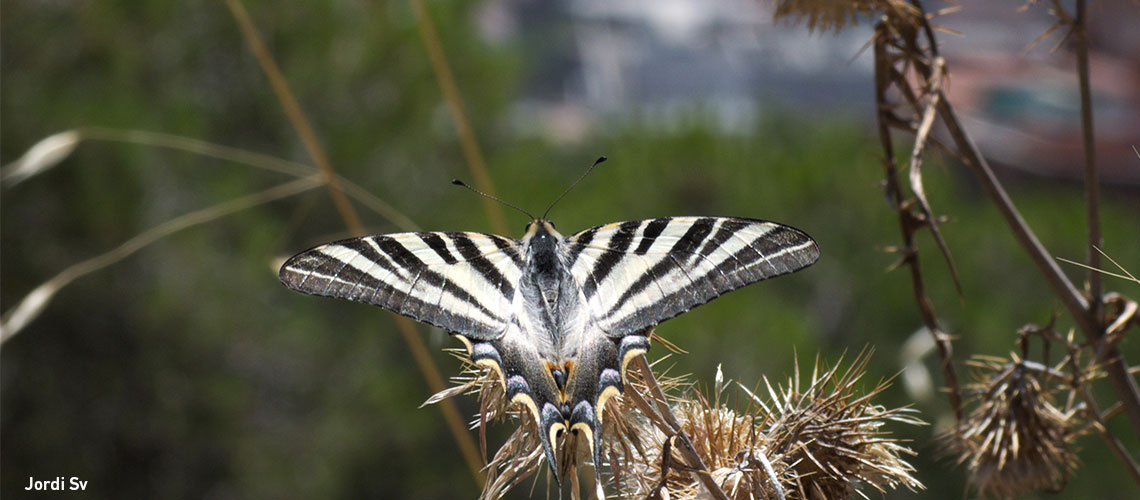The Metropolitan Butterfly Observatory mBMS expands its scope of study from 8 to 20 parks and beaches. Through citizen science, the Observatory studies the biodiversity of the network of metropolitan parks and beaches.
The Observatory is driven by the Barcelona Metropolitan Area (AMB), with the collaboration of the Barcelona Institute of Regional and Metropolitan Studies (IERMB) and the center of research in ecology, climate change and biodiversity CREAF, through the Metropolitan Laboratory of Ecology and Territory of Barcelona (LET).
The project aims to complete the task of the Catalan Butterfly Monitoring Scheme CBMS, which has been studying butterflies all over Catalonia for more than 20 years, and the urban Butterfly Monitoring Scheme uBMS, which has been studying butterflies in the parks of the cities of Madrid and Barcelona for two years.
The first and second phases of the observatory began in six parks and two metropolitan beaches (2019-2020). For the third phase, the observatory has been expanded to ten parks and two additional beaches, reaching a total of sixteen parks and four beaches in the network of metropolitan parks and beaches.
Specifically, it started in Parc de la Muntanyeta (Sant Boi de Llobregat), in Parc de la Fontsanta (Sant Joan Despí and Esplugues de Llobregat), in Parc del Turonet (Cerdanyola del Vallès), in Parc dels Pinetons (Ripollet), in Torrent de la Font and Turó de l’Enric parks (Badalona), Tramvia park (Montgat and Tiana), Castelldefels beach and Gavà beach.
The third phase has added the Platja de la Murtra (Viladecans), the Platja del Remolar (El Prat de Llobregat), the Parc del Riu (El Prat de Llobregat), the Parc del Calamot (Gavà), the Parc de la Torre Roja (Viladecans), the Parc del Pi Gros (Sant Vicenç dels Horts), the Parc de la Llacuna (Montcada i Reixac), the Parc de Can Zam (Santa Coloma de Gramenet), the Parc del Castell (Castelldefels), the Parc de Torreblanca (Sant Feliu de Llobregat, Sant Just Desvern and Sant Joan Despí), the Canal de la Infanta (Cornellà de Llobregat) and the Bosc de Can Gorgs (Barberà del Vallès).
The aim of the Observatory is:
Get to know the biodiversity of the network of metropolitan parks and beaches, taking as a case study the presence of diurnal butterflies, an insect that gives a lot of information to be able to assess and improve the biodiversity of different habitats, including metropolitan ones.
Evaluate the results of the management of biodiversity in metropolitan parks and beaches
Start the first phase in the study of the diversity of butterflies in the Mediterranean dry meadows, an environment especially rich in biodiversity.
The Observatory is part of the Pla de millora de la biodiversitat dels parcs i les platges. These metropolitan spaces often occupy an intermediate position between the metropolitan urban fabric and large natural spaces. Although they are great unknowns at the scientific level, they host a lot of biodiversity and have a great socio-environmental value. They can also play a prominent role in the ecological connectivity of the territory, as they facilitate the entry of native wildlife into cities. Therefore, the study aims to follow the butterflies of these metropolitan areas and at the same time be a laboratory to test strategies to improve the abundance and diversity of this group of insects.
+info: http://mbms.creaf.cat

